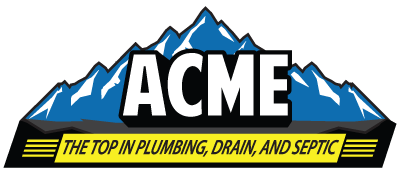Understanding Sewer Line Backups: Causes and Prevention Tips
Sewer line backups are among the most frustrating and potentially costly plumbing issues that homeowners can face. When your sewer line becomes blocked or damaged, it can lead to sewage backing up into your home, causing extensive damage, unpleasant odors, and even health hazards. Understanding the causes of sewer line backups and knowing how to prevent them can save you from a major headache down the line.
Common Causes of Sewer Line Backups
Tree Root Infiltration
Tree roots are naturally attracted to the moisture and nutrients in sewer lines. Over time, they can grow into the pipes, causing blockages and even cracking the pipes themselves. Once inside, roots can quickly expand, leading to significant blockages that can result in a sewer backup. This is particularly common in older homes with clay or concrete sewer lines, as these materials are more susceptible to root intrusion.
Clogs from Household Waste
Household waste, such as grease, hair, soap scum, and non-flushable items, can accumulate in the sewer line over time and create a blockage. Grease is a major culprit because it can solidify in pipes, creating a stubborn clog that is difficult to remove. Items like paper towels, feminine hygiene products, and "flushable" wipes do not break down as easily as toilet paper and can contribute to sewer line blockages when they accumulate.
Collapsed or Damaged Pipes
Sewer lines can deteriorate over time due to age, ground movement, or the use of outdated materials like clay or cast iron. When a pipe collapses or becomes damaged, it can block the flow of wastewater and lead to a backup. In some cases, the weight of heavy vehicles or construction equipment can cause pipes to collapse, especially if they are already weakened by age.
Heavy Rainfall or Flooding
Excessive rainfall can overwhelm municipal sewer systems, leading to backups in individual homes. When the system becomes overloaded, the excess water can push sewage back up through the pipes and into homes. Homes with basements or those located in low-lying areas are particularly at risk during heavy rain events.
Prevention Tips to Avoid Sewer Line Backups
Be Mindful of What You Flush and Pour Down the Drain
To prevent clogs, be cautious about what goes down your drains. Never flush anything other than toilet paper and human waste down the toilet. Avoid pouring grease, oils, and fats down your kitchen sink. Instead, dispose of them in a sealed container in the trash. Additionally, use drain screens to catch hair and other debris before it enters your plumbing system.
Schedule Regular Sewer Line Inspections
Regular inspections of your sewer line can help catch potential problems before they lead to a backup. A professional plumbing service like ACME Plumbing can use a camera to inspect the inside of your sewer line and identify any root intrusion, clogs, or damage. If an issue is detected, it can be addressed proactively before it becomes a major problem.
Consider Tree Placement When Landscaping
When planting trees or large shrubs, consider their proximity to your sewer line. Plant trees at least 10 feet away from sewer lines to prevent roots from growing into the pipes. If you have existing trees near your sewer line, you may want to consider removing them or installing a root barrier to protect your pipes.
Install a Backwater Valve
A backwater valve is a device that can be installed in your sewer line to prevent sewage from flowing back into your home during a backup. This is especially useful for homes in flood-prone areas or those with a history of sewer backups. A backwater valve allows wastewater to flow out of your home but prevents it from coming back in.
Maintain Your Sewer System
Regular maintenance is key to preventing sewer line backups. Schedule annual or biannual sewer cleanings to remove any buildup or blockages that could lead to a backup. Professional plumbers can also perform routine maintenance tasks, such as hydro-jetting, to keep your sewer lines clear and functioning properly.
Sewer line backups can be a nightmare for homeowners, but with the right knowledge and preventive measures, they can be avoided. By understanding the common causes of backups and taking proactive steps to prevent them, you can protect your home from the costly and unpleasant consequences of a sewer line backup. Regular inspections, mindful disposal habits, and proper tree placement are all crucial components of a comprehensive sewer line maintenance plan. Remember, when it comes to sewer lines, prevention is always better—and cheaper—than dealing with a backup.
